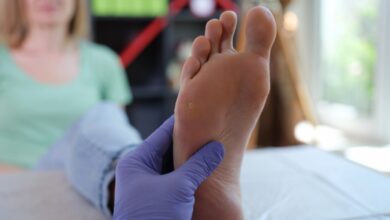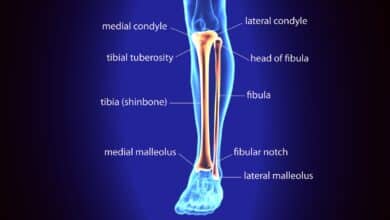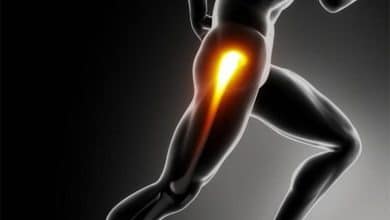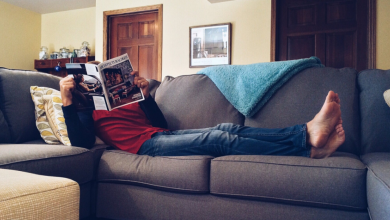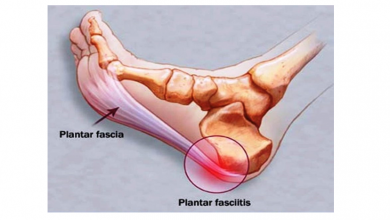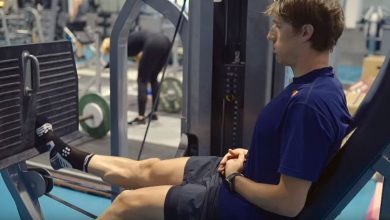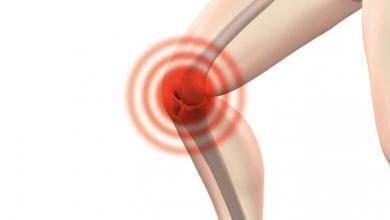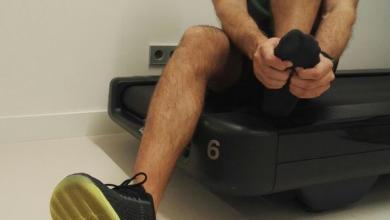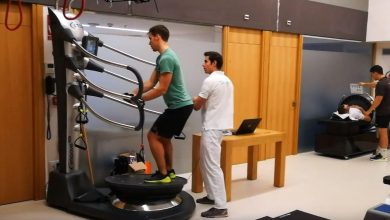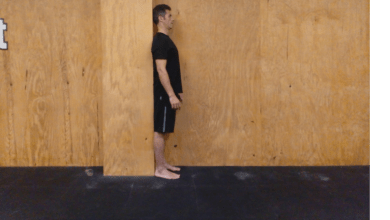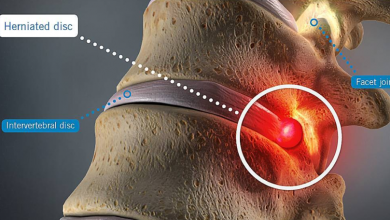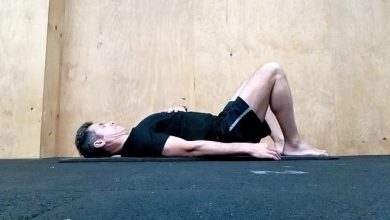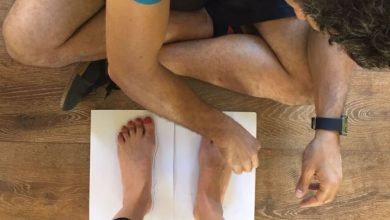The best anti-inflammatory for plantar fasciitis: effective remedies to relieve pain
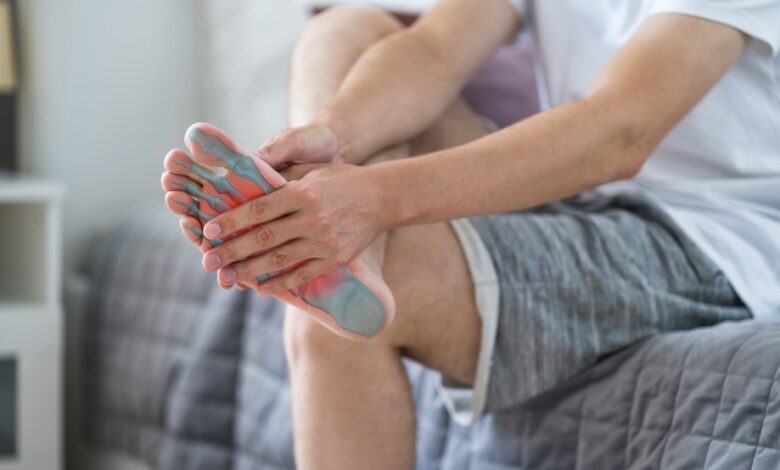
La Plantar fasciitis It is a painful inflammation on the sole of the foot. It is characterized by acute pain when standing up and when stepping after sitting for a long time.
A biomechanical study is recommended to determine the origin and use of personalized insoles. In addition, physical therapy, appropriate footwear and rest are key in treatment.
There are products such as Voltadol Forte, an anti-inflammatory cream recommended for the relief of plantar fasciitis. Other treatment options include splinting and ultrasound, under medical supervision.
1. What is plantar fasciitis?
Plantar Fasciitis Definition
Plantar fasciitis is a condition characterized by inflammation of the elastic tissue that runs through the bottom of the foot, known as the plantar fascia.
This inflammation causes intense pain in the heel area and can limit the patient's daily activities. It is one of the most common causes of pain in this area and mainly affects people who play sports or spend a lot of time on their feet.
Common Causes of Plantar Fasciitis
Plantar fasciitis can be caused by various factors. Among the most common are:
- Incorrect footing: An incorrect footing can put excessive pressure on the plantar fascia, leading to inflammation.
- Playing sports on hard surfaces: Running or jumping repeatedly on hard surfaces can trigger the onset of plantar fasciitis.
- Wearing the wrong shoes: Wearing shoes without adequate support or with poor cushioning can contribute to the development of this condition.
- Flat or arched feet: A lack of arch or an excessively high arch in the foot can increase stress on the plantar fascia.
- Obesity – Excess weight places an additional burden on the feet, which can trigger inflammation of the plantar fascia.
Symptoms and diagnosis of plantar fasciitis
Plantar fasciitis can generate a series of symptoms that can affect daily activity.
It is important to recognize these symptoms and seek an appropriate diagnosis to initiate appropriate treatment. Among the main symptoms of plantar fasciitis are:
Sharp pain in the sole of the foot
Sharp pain in the sole of the foot is one of the most characteristic symptoms of plantar fasciitis. It is mainly experienced when getting up in the morning or after prolonged periods of rest.
This discomfort usually decreases as the foot warms and moves, but may intensify with prolonged standing or activities such as running or walking long distances.
Other symptoms of plantar fasciitis
In addition to sharp pain in the sole of the foot, there are other symptoms associated with plantar fasciitis. These include:
- Pain in the heel or arch of the foot, which may extend to the back of the foot.
- Swelling and tenderness at the bottom of the heel.
- Difficulty walking or standing for long periods due to pain.
- Stiffness in the sole of the foot, especially after periods of inactivity.
Diagnosis of plantar fasciitis
The diagnosis of plantar fasciitis is based on the symptoms described by the patient and on the clinical evaluation carried out by a health professional. During the evaluation, a physical examination of the foot may be performed, looking for swelling, tenderness, and pain when pressing on the plantar fascia.
In addition, additional tests such as x-rays or ultrasound may be requested to rule out the presence of other similar conditions, such as heel spurs or tendon injuries.
Getting an accurate diagnosis is important to determine the best treatment and effectively relieve the symptoms of plantar fasciitis.
Plantar Fasciitis Treatment
Plantar fasciitis is a painful condition that requires proper treatment to relieve symptoms and promote recovery. Below are the different treatment options that may be beneficial in treating plantar fasciitis:
Biomechanical study and personalized templates
A biomechanical study carried out in a specialized podiatry clinic can be of great help to determine the origin of inflammation in the plantar fascia.
Based on the results of this study, custom insoles can be fabricated that correct gait and reduce stress on the plantar fascia.
These insoles are designed according to the individual needs of each patient and help improve weight distribution on the foot, providing relief and reducing inflammation.
Physiotherapy and exercises for the plantar fascia
Physical therapy plays a critical role in the treatment of plantar fasciitis. Physical therapists can use various techniques and exercises to strengthen the plantar fascia, improve the flexibility of the leg muscles, and reduce pain.
Some of the therapies used include specific stretching for the plantar fascia, massage, ultrasound, and strengthening exercises. It is important to follow the treatment plan recommended by the physical therapist regularly and consistently to obtain positive results.
Use of appropriate footwear and rest
Proper footwear plays a crucial role in treating plantar fasciitis. It is important to wear shoes that provide good cushioning and arch support.
Shoes with cushioned soles and good shock absorption system can help reduce pressure on the plantar fascia. In addition, it is recommended to avoid wearing flat shoes or high heels, as they can aggravate the condition.
Rest is also an essential part of treatment. Resting affected feet by avoiding activities that cause pain and excessive pressure can help speed recovery.
It is recommended to alternate activities that involve standing with moments of rest and elevate the feet when possible to reduce inflammation.
Recommended products to relieve plantar fasciitis
To alleviate the symptoms of plantar fasciitis, there are several recommended products that can help reduce pain and inflammation.
Among them, Voltadol Forte stands out, an anti-inflammatory cream that has proven to be effective in relieving the symptoms of plantar fasciitis.
Voltadol Forte: anti-inflammatory cream
Voltadol Forte is a cream that acts as an analgesic and anti-inflammatory, providing fast and long-lasting relief from the symptoms of plantar fasciitis.
This cream contains diclofenac diethylamine, an active ingredient with anti-inflammatory and analgesic properties.
To use Voltadol Forte, it is recommended to gently massage the affected area twice a day. The cream is quickly absorbed and does not leave a greasy feeling on the skin. In addition to relieving pain and inflammation, Voltadol Forte helps improve mobility and facilitates recovery.
Other Treatment Options Available
In addition to Voltadol Forte, there are other treatment options to relieve the symptoms of plantar fasciitis. Some of these options include:
- Other analgesics and anti-inflammatories: There are different medications available in different forms, such as tablets or gels, that can help reduce the pain and inflammation associated with plantar fasciitis. It is recommended to consult with a doctor or pharmacist to determine which is the most appropriate in each case.
- Shock wave therapy: This treatment uses acoustic waves to stimulate healing of the plantar fascia. It can be an effective option for those cases in which other treatments have not worked.
- Acupuncture: Acupuncture has been shown to help reduce pain and inflammation associated with plantar fasciitis. This technique is based on the insertion of thin needles into specific points on the body to stimulate healing.
- Functional bandages: Functional taping can help provide support and stability to the plantar fascia, reducing pain and facilitating recovery. These bandages must be placed by a health professional to guarantee their correct application.
It is important to keep in mind that each person can respond differently to treatments, so it is advisable to consult a specialized doctor to evaluate the case individually and determine the best treatment option.
Frequently Asked Questions About The Best Anti-Inflammatory For Plantar Fasciitis
What is the best anti-inflammatory to treat plantar fasciitis?
The treatment of plantar fasciitis can vary depending on the needs of each individual, so there is no single anti-inflammatory considered the best for all cases. However, there are different effective options that can help relieve pain and reduce inflammation.
It is advisable to consult a specialist, such as a podiatrist or doctor, who will assess your individual situation and prescribe the most appropriate anti-inflammatory for your specific case. Some of the commonly used medications include ibuprofen, naproxen, and diclofenac, which can be administered as tablets, gels, or topical creams.
Are there side effects in the use of anti-inflammatories?
The use of anti-inflammatories can have side effects in some people. It is important to follow the specialist's instructions and not exceed the recommended dose to avoid possible complications. Some common side effects can include gastrointestinal problems, such as stomach pain, heartburn, or irritation, as well as dizziness, drowsiness, or allergic reactions.
If you experience any side effects, it is important to inform your doctor so that he can assess your situation and make any necessary adjustments to your treatment.
Is it necessary to see a doctor to treat plantar fasciitis?
If you experience persistent pain in the bottom of your foot and suspect that you may have plantar fasciitis, it is advisable to consult a doctor specializing in podiatry or a general practitioner. These professionals will be able to make an accurate diagnosis and determine the most appropriate treatment for you.
A specialist can perform a detailed assessment of your condition, run additional tests if necessary, and offer personalized treatment options to help relieve pain and improve your quality of life.
What other therapies and treatments may be helpful in treating plantar fasciitis?
In addition to anti-inflammatories, there are other treatments and therapies that may be helpful in treating plantar fasciitis:
- Physiotherapy: Physical therapy can help strengthen the muscles and tendons in the sole of the foot, as well as reduce inflammation and improve mobility. A specialized physiotherapist can design a specific exercise program for your case.
- Exercises and stretches: Performing specific exercises and stretches for the plantar fascia can help relieve tension and strengthen the muscles in the affected area.
- Use of splints or supports: Night splints and arch supports can help keep your plantar fascia stretched overnight, which can relieve morning pain.
- Ultrasound therapy: Ultrasound therapy can help reduce inflammation and promote healing of the plantar fascia by applying high-frequency sound waves to the affected area.
It is important to remember that each case of plantar fasciitis is unique, so it is advisable to consult a health professional to determine which therapies and treatments will be most effective for you.
There are no previous results.








